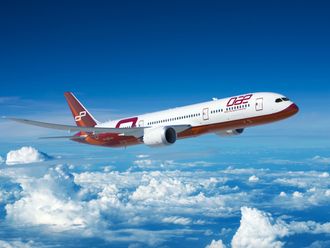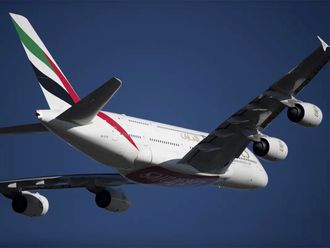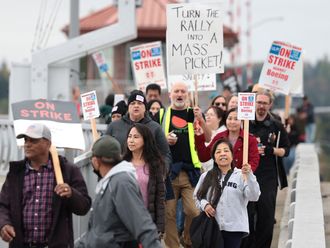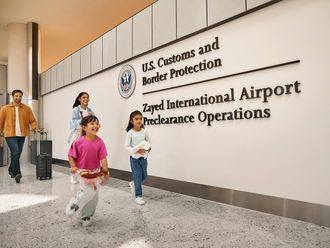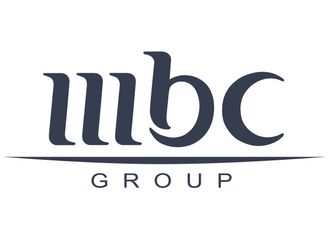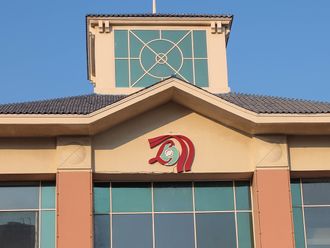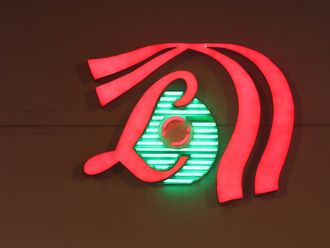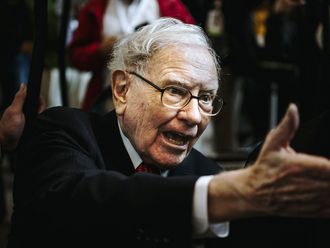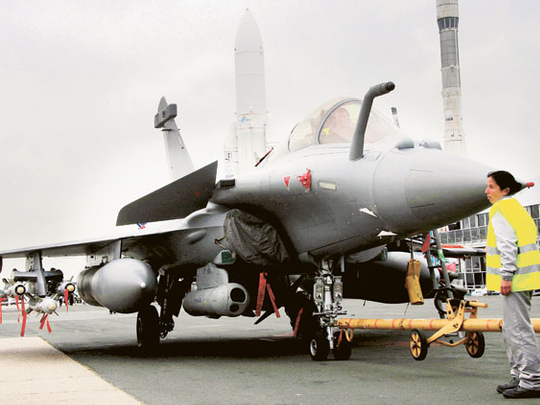
Dubai: There is a sense of optimism in the air at the offices of Dassault Aviation and Dassault Systemes in Paris, as the two bodies of the company blend to take its manufacturing, technological and scientific capabilities into a new era of commercial and defence aviation.
The manufacture of business aircraft takes up the bulk of the book for Dassault, while fighter jets like the Mirage 2000 and the recently developed Rafale ‘omnirole' fighter complete the picture. Exports account for over 60 per cent of net sales.
While Dassault has a proven pedigree in aviation and air defence systems, its pet project, the Rafale fighter jet, is currently the buzzword in countries hoping to upgrade their air fleets and also in live ‘operation theatres' such as Libya and Afghanistan, where it is being used in combat situations by the French Air Force.
Cautiously optimistic
Now, Dassault is cautiously optimistic of completing an export win with the possible sale of the fighter to the UAE, India and even Brazil. Currently the French air force is the Rafale's sole client and the whiff of a contract has never been so close.
"I would not say that the Rafale has suddenly come into the news," said Eric Trappier, executive vice-president, International, Dassault Aviation.
"We have established ourselves as a result of long, hard work in Europe, the UAE and India. The UAE and India have been longstanding clients of Dassault — with the purchase of Mirage 2000s — and this means that they have been satisfied with what we have had to offer before," he said.
Different approaches
"Different approaches are reserved for prospective clients. The Indian government ensured that the Indian Air Force (IAF) had invited six tenders from manufacturers," Trappier said.
"This was shortlisted down to two after Indian pilots worked technically and operationally on our planes," he said.
"This was phase one of the proposal: complete evaluation of the six manufacturers in their conditions with pilots exercising and even firing weapons and resorting to different types of flights in the desert and altitude. In the end they gave us their feedback and the two short listed manufacturers are the Rafale and the Eurofighter Typhoon."
Peculiarity
The peculiarity of this deal is that it is the first time that the Eurofighter and the Rafale have faced off against each other in a final countdown, even though they have competed in tenders. A triumph for either jet could well be a win-win for the European Aeronautic Defence and Space Company (EADS) which owns a 46 per cent share holding in the Eurofighter consortium, as well as 46.3 per cent in Dassault.
An agreement for 126 aircraft with New Delhi could be potentially worth $10 billion-$12 billion (Dh36.7 billion-Dh44 billion).
"With the UAE, however, our approach is vastly different," Trappier said.
"We have a direct approach. This is based on the close relationship between the two countries. We made a few flights with the Rafale for evaluation. The UAE government is used to working with the French, which is why we have proposed the sale of roughly 60 Rafale jets."
Book value
The book value of this contract is believed to be in excess of $8 billion. It is now understood that negotiations have gone a step forward after France received technical and operational specifications from the UAE's armed forces along the sidelines of the ongoing Le Bourget Air Show in Paris. A date for signing a deal is to be set following financial negotiations.
Sources at Dassault are hoping that this will be closed in the UAE at the Dubai Air Show.
A further $7 billion deal with Brazil could complete the big picture for Dassault but for a few irritants in the negotiations. Former President Luiz Inacio Lula da Silva came close to signing on the dotted line, after competitors like the Boeing F-18, Grippen Saab and the Typhoon had bowed out, but held back, leaving the decision to current President Dilma Roussef who took office last January 1.
"Each country has its own set of requirements and they focus on their individual capabilities," Trappier said, explaining the method behind individual negotiations.
Expounding on the logic behind making a multi-dimensional fighter like the Rafale, Trappier said: "The idea behind its creation is dominated by cost and financial restrictions. The general headquarters in France proposed building one single aircraft with all types of mission capabilities and one which could serve the French navy as well as the airforce."
Believing that this type of fighter aircraft could go on to become the norm for the future Trappier explained: "The military role and the omnirole capability are flexible because it is capable of adapting the strengths of the aircraft to the mission at hand. Missions can be more and more ‘wide', as in Afghanistan and Libya, or complete war — so it is easy when one has an aircraft capable of many purposes."
Lost contracts
Despite the Rafale's inherent strengths there were contracts that were lost, as in South Korea, Singapore and Morocco which opted for the Boeing F-15 and Lockheed Martin's F-16.
"If we are referring to South Korea and Singapore, we must remind ourselves that this is where the Americans are strong in terms of their political approach. American fighters had been sold before and so these countries went in for a process of continuity," he said. "Therefore, we don't consider it to be a loss as the process of negotiation was a foregone conclusion. Also, we must not forget that the Rafale was operational in the French Air Force only in 2006 so it is quite new."
Trappier believes the sky is the limit for the evolution of the Rafale.
No restrictions
"There are no restrictions. Some countries have even upgraded the F-5 aircraft which is an old plane. The Rafale can continue to be adapted for the next 30 years and will remain in the French forces for the next 40 years," he said.
"The systems in the plane were built up in order to receive these types of adaptations. There is no limit except a physical limit: like a limit on sensors on board. But the main sensors are there like the radar, the electronics, the countermeasures, the weapons," he added.
"In an aircraft which has an empty weight of 10 tonnes we have built a very well-conceptualised plane which may address everything, including the ration between fuel and capability to carry weapons and other such matters."
Looking at the future Trappier was confident in his view that more and more governments would be looking to trim their defence budgets.
On track
In this respect France is already on track.
"Prospects are open, but we developed the Rafale because we were pushed by our airforce and navy to do it. Whether the United States and other countries will do it is anybody's guess — they prefer dedicated fighters and their budgets are still huge. Maybe they will change."
With regard to the impending export of the Rafale, Trappier said: "There needs to be a level playing field where considerations are limited to the efficacy of the product. Serious testing must be the key and not just influence. The merchandise must be good after strenuous evaluation, but ultimately the selling of a fighter plane will always be the result of a political decision."


